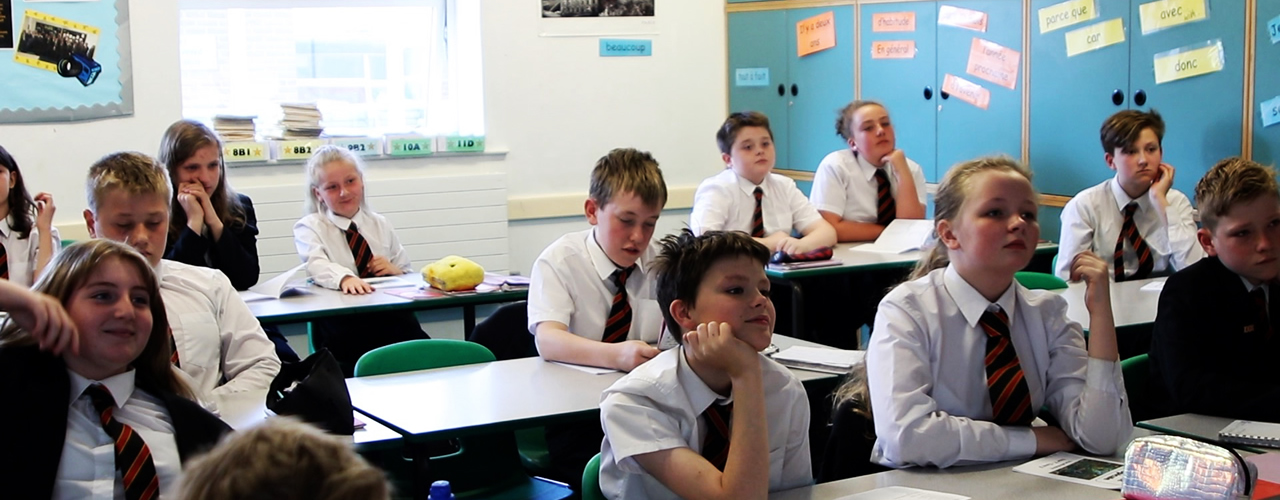Reporting and Assessment
Targets
At New Mills School, each pupil’s target grades are calculated using their Key Stage 2 results. As they enter the school students are given two targets which are GCSE grades. One is the grade they are expected to get, given their starting point, and the other is an aspirational grade which we encourage them to strive for. As we learn more about each individual student, targets can be revised, and this is done in consultation with the subject teacher, the student, the faculty leader and the senior leadership of the school.
Parents of all students will no doubt notice that the targets students are set are now numbers from 9 to 1. The reason for this change is that The Department for Education (DfE) and Ofqual have introduced new GCSE courses which will now be graded 9 to 1 rather than A* to G. Targets are therefore set on this scale rather than the old A*-G scale. To explain how the two scales compare:
- Grade 9 is the new grade for high performing students above the current A* grade
- Grades 7 and 8 are broadly in line with the old A and A* grades.
- A grade 6 is similar to an old B grade
- Grade 4/5 is broadly in line with the current grade C.
- The new baseline grade for a “good pass” is a grade 5.
The DfE and Ofsted have also removed the compulsory use of National Curriculum levels and have directed schools to choose their own preferred model to track pupils’ progress to enable them to achieve their best. Students at New Mills School work towards their GCSE grades 9-1 from the moment they arrive in Year 7 all the way through to their GCSE examinations in Year 11.
The DfE has launched a new GCSE webpage which provides information on the exam changes for students, parents, employers and those who work in education. It explains:
-
why the GCSEs are changing
-
when they are changing
-
why the grading scale is changing and how the new grades align with the A* to G scale
-
the difference between a ‘standard’ and a ‘strong’ pass
-
what this means for students, schools, parents, employers and others who work in education
This new webpage also links to GCSE factsheets for parents, employers, and for further and higher education providers. Please have a look if you are interested in learning more.
The AQA exam board have also produced this animation to help explain the changes to the grading system: 9-1 Grading
Reporting
Students will receive two or three reports each year which will include a forecasted grade for each subject, information on their performance in our 5Rs, and information on key pastoral data (for example attendance and punctuality statistics). Crucially, in every subject they will receive next step actions. These are specific activities to do which will help move them forwards. These activities should be carried out in the weeks following a report.
The timetable for the issuing of snapshot reports is as follows:
Year 7 December, June
Year 8 December, July
Year 9 November, March, June
Year 10 December, March, June
Year 11 October, January, March
The forecasted grades which appear for a student are likely to remain static on snapshots throughout Year 7 to Year 11; unless their performance in assessments gives staff clear indication that the GCSE grade they are likely to achieve is higher or lower. The grades given in reports are directly comparable to the targets they are set, and students not on track can be identified easily. A student receiving the same grade throughout their time at New Mills School is making progress as the complexity of each subject is increasing.
These forecasted grades are arrived at through teacher judgement of each student’s performance in class, in homework tasks, and in the summative assessment. For Year 11 and Year 10 one of the summative assessments is calendared and formal exam conditions are provided. For Year 7-9 the scope and conditions of these assessments are at the teacher’s discretion, in line with their agreed subject approach. The formal exam timings are:
Year 11: Monday 16th December to Friday 10th January
Year 10: Monday 15th June to Friday 26th June
On a snapshot report a student’s forecast grade for each subject is colour coded to make identifying areas of strength, and areas which need work easily identifiable. The colour coding is as follows:
Gold – forecast is a grade (or more) above expected target (this student is making more progress in this subject that expected)
Green – forecast is at expected target (this student is progressing at the rate expected of them)
Amber – forecast is one grade below expected target (this student is making less progress than is expected of them)
Red – forecast is two (or more) grades below expected (this student is making significantly less progress than is expected of them)
Students that do begin to make less progress than is expected of them are given opportunities to help them improve. This may be as simple as being given a different seat in the classroom, ranging through to being invited to additional sessions with a member of staff.
Alongside a student’s forecasted attainment we summarise the student’s attitude to learning in each subject with a 5Rs indicator. The 5Rs are Respectful, , Responsible, Resilient, Reflective and Responsible. Subject teachers reflect on lessons and work produced by each student and compares this to a set of descriptors for each “R”. They then highleight areas of strength and areas to work on where needed. On the report an action given where the attitude to learning from the student is not up to expected standard in a particular R.
Any question or queries about an individual student’s reports should be directed to the form tutor or subject teacher in the first instance.







